Sarah Britton looks at all the ingredients you need to get shoppers cooking from scratch and dishing up bigger profits for you
Cobwebbed colanders, unloved ladles, and forgotten frying pans. Until recently, they’d been locked away in numerous kitchen cupboards across the nation, gathering dust. But as thousands of consumers wake up to both the culinary and economical benefits of home-cooking, these once useless utensils are being whisked into life. And your sales can receive a similar rejuvenation if you give customers a helping hand to find their inner Nigella.
Sukh Gill has witnessed the trend for cooking from scratch at his Nisa store in Burton-on-Trent. “I think people feel it’s healthier and cheaper to cook from scratch, and the more volume sales in fresh, the better for us,” he states. “You only get a 25% margin on a ready meal, whereas on fresh vegetables you’re looking at 30%.”
James Brundle, co-owner of Spar in Walthamstow, East London, agrees that a desire to save money and eat more healthily is at the root of the growth in cooking from scratch. “When consumers cook for themselves, they can ensure that their food is free from e-numbers. Also, cooking programmes are showing people that it isn’t that hard to do,” he adds.
Indeed, celebrity chefs have had a huge influence on consumer behaviour, states Steve Mew, manager of Maloney’s Budgens of Ascot, Berkshire. “They have made it fashionable and fun to cook. When Delia’s on television we always notice a surge in sales of the products she uses the next day.”
Over at Malcolm’s Store in Coventry, it’s a similar story. “TV has done us a big favour,” says co-owner Paul Cheema. “Cooking from scratch is a very big trend - Jamie Oliver has really inspired people. He was cooking Empire Roast Chicken on TV one Friday evening and on the Saturday we had customers coming in and asking for all the ingredients. The scratch-cooking trend has been growing for about the past four months in our store.”
Fresh meat matters
The Agriculture and Horticulture Development Board’s top 10 recommendations for convenience stores:
1. Beef mince
2. Chicken breast
3. Fresh beef burgers
4. Pork chops or steaks
5. Pork sausages
6. Beef stewing steaks
7. Gammon joint
8. Chicken drumsticks
9. Beef sirloin steak
10. Lamb chops
And it’s not always the usual suspects who are picking up ingredients. “Young people are interested in cooking. We get groups of guys doing it - customers who used to go out on Friday nights are now having a big cook-up instead,” says Paul. “They buy all the ingredients and then go round to a friend’s house and one will be cooking the chicken, while another is doing the starter.”
Steve has also noted that it is younger people who are catching on to scratch-cooking. “Ten years ago everyone knew how to cook fish as they learnt it from their mums. Then it went out of fashion and people stopped cooking it. But in recent times, food programmes have covered a lot of fish dishes and we get plenty of 20- and 30-year-old customers asking about it.”
Shopper think tank IGD has also witnessed a trend towards young people and cooking. The group’s latest ShopperTrack research shows that more than half (51%) of shoppers aged under 35 claim to be cooking more from scratch, versus 35% of over-35s.
Kitchen aid
But while a large number of shoppers are keen to cook from scratch, a lack of knowledge - particularly where younger would-be cooks are concerned - means they need a little guidance on how to get started. Phil Critchley of Croscombe Village Stores, Somerset, gets his customers raring to go with email newsletters featuring a recipe of the week, using ingredients from the shop. “We try to use products that are in keeping with the season,” he says. “Sometimes we’ll get a bit of a rush in the store as people come in with a printout and buy everything in the recipe!”
Meanwhile, Maloney’s Budgens uses recipe cards to advise and encourage customers to cook from scratch. “A couple of years ago we started to provide recipe suggestions around the store, and customers love them. They’re particularly popular on products such as fish, which people are less confident cooking,” says Steve. “Recipes in-store have to be relatively simple. We’re a large basket shop, so people want to be in and out as quickly as possible. We also offer menu cards on shelf-edge labelling explaining how different proteins can be cooked (for example, steamed, fried or boiled).”
Meal ideas
James also displays recipe cards on-shelf, which he has been sent from suppliers. “People look at Tracklements condiments recipe cards and they’ll see, for example, a recipe for sausages and red onion marmalade. It’s something a bit different from the norm and it usually works out cheaper for shoppers than buying something ready-made,” says James. “We’ll put recipe cards by the meat and condiments sections in order to increase the likelihood of people following the recipes and buying more products.”
Paul has also noted that suppliers have been quick to get on board with the trend. “We’ve got new recipe inspiration kits from Schwartz, which are recipe cards containing spice sachets. People don’t want the same old roast dinner - they want to jazz it up.”
But he is keen to go the extra mile and provide recipe suggestions unique to the store. “We’re putting up a recipe board in the dairy aisle, which contains fresh meat and cooking sauces. We’ll give the member of staff who looks after that aisle the responsibility of changing it every week so that she really feels involved. Because she works in that aisle, she’ll be able to upsell it, too.”
Paul has also acknowledged that in-store recipes provide a good opportunity to work more closely with suppliers. “We’re also working with our meat supplier and a company called Flavourit to come up with our own recipe cards,” he says. “There’ll be cards hung on shelf-edge labelling in front of a product and customers can simply rip off the recipe and walk around the store with it, picking up the ingredients they need. There will be costs involved so that’s why we’re working with other companies to help fund it.
“The recipe card will tally up the price and will contain a few simple ingredients. It needs to be kept very straight forward,” he adds.
At Nisa Burton-on-Trent Sukh agrees that in-store recipe suggestions must be simple if they are to be effective. “If you can plant an idea in people’s heads - buy these set ingredients and cook a meal - then you may well be able to convert a ready meal customer into a cook.”
On the menu
He is hoping to benefit from Nisa’s new in-store recipe card initiative, which launched earlier this month, where customers are encouraged to buy ingredients listed on in-store recipe cards provided by the symbol group. The meal on the card also appears in Nisa’s latest burst of TV advertising, and Sukh is confident that this will help to increase basket spend. “We will really be pushing these and letting customers know about the menu cards, ensuring good visibility and merchandising the ingredients required together on promotional ends.”
In addition to supporting the initiative, Sukh has also changed the layout of certain categories to ensure that complementary products are near each other. “Putting condiments such as sauces and spices near to the meat is a good tip. We’ve been doing it for the past few months and it’s really started to move some products which were previously slow sellers.”
Paul has also witnessed phenomenal success by moving meats and condiments near to each other. “When we re-fitted our store seven months ago we put our fresh meat in the first aisle and every herb and sauce you might need opposite. We’ve seen a 6% sales increase in dairy and home-cook sauces since merchandising them together.”
Staff at Maloney’s Budgens haven’t moved the categories closer together, but have instead chosen to put newly launched condiments next to complementary fish and meat. “When you start displaying related items together it takes a while for them to take off,” says Steve. “We started doing it two years ago and it’s expanded a lot in recent times. It’s very successful - people stand looking at the products and spot a condiment that they wouldn’t even have considered buying previously. If you just put a new sauce in the sauce fixture it loses its impact. People won’t look for them in a commodity group, but they’ll see them if we highlight them.”
He claims that putting a selection of ambient groceries in front of the meat cabinet has worked a treat, and some ambient products are even put into the chiller to give them extra appeal. “Some 45% of our turnover is from fresh food so if we bring other items to that area people will buy them, whereas once customers are in the grocery aisles their shopping becomes a much more robotic task and they are just topping up those goods that they’ve run out of.”
Malcolm’s store has also latched on to the idea of taking products out of their usual homes and locating them near other cook-from-scratch ingredients. “We’ve put a wine tower in our dairy aisle so that people are thinking about cooking with it or having a bottle with their home-cooked meal, and the increase in sales has been phenomenal,” says Paul. “We’ve also had it stood by the fresh vegetables aisle and it performed there, too.”
Of course, it’s all very well providing recipe cards and ensuring that various ingredients are easy to find, but nothing beats some good, sound product knowledge. “Fresh meat is growing in popularity more than anything in our store, and product knowledge is really important,” says Phil. “We don’t claim to be experts on meat, but you need to know enough about it to make basic recommendations. You have to have general knowledge of where the meat is from and how to cook it. You need to take in as much as you can digest about a product from the supplier.”
Steve’s team is also hot on cooking knowledge. “My fresh food manager ensures every new local supplier explains to them how to cook the product, and he’ll spread the word to the others in the department.”
And Spar Walthamstow has its own chefs. “If you’re going to do cooking-from-scratch options, you have to do it properly and have staff with good food knowledge,” says James. “We have chefs in the store at our pizzeria, and they’ll often get approached by customers looking for cooking advice. That is part of the reason why we hired them. It adds to the shopping experience and means people purchase more.”
Well merchandised food, in-store recipe cards and staff armed with a basic cooking knowledge are the key ingredients you can use to get customers back in their kitchens and, more importantly for you, increasing their basket spend.
Now we’re cooking!■
Source
Sarah Britton





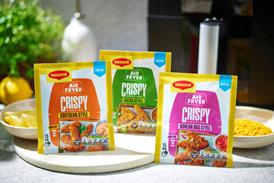












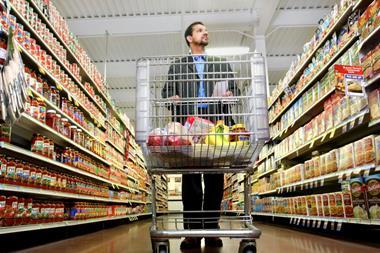


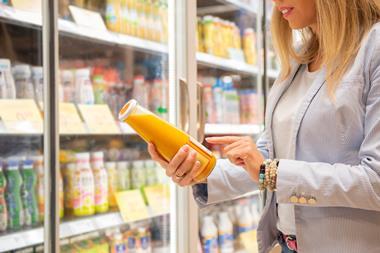

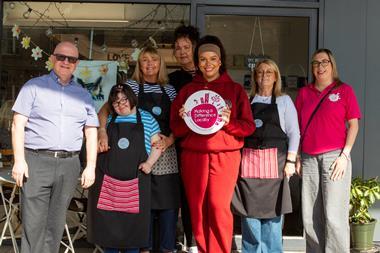
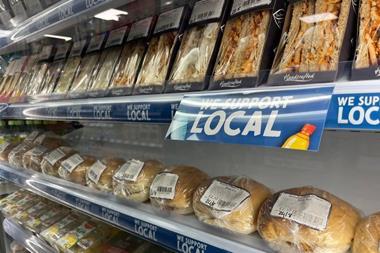


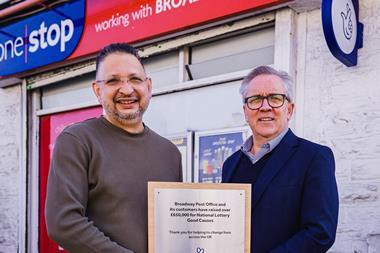
No comments yet